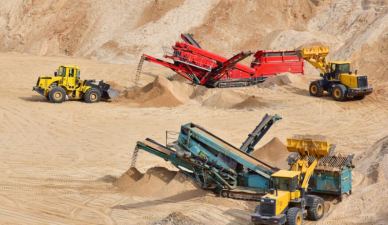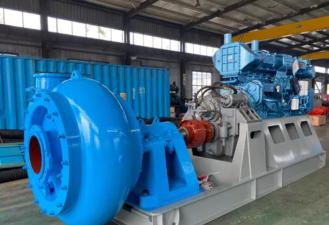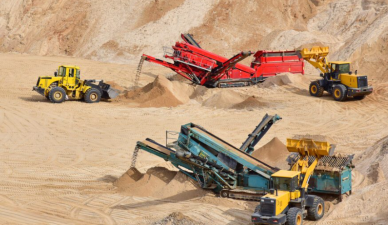
A sand pump is a type of centrifugal slurry pump used to transport suspensions containing sand, slag, and other materials.
The impeller is typically open. The pump's lining is generally made of two types: wear-resistant metal and wear-resistant rubber. High-pressure water is injected into the sliding parts of the pump shaft to prevent mud and sand from entering the sliding parts. This type of pump can be used to transport liquids containing coarse solids with a particle size of 48 mesh or larger. The term "sand pump" simply refers to a specific application of a centrifugal pump.
Sand pumps are essentially a general term. It is generally used in industries such as mining, coal mining, metallurgy, chemicals, and environmental protection. Generally speaking, sand pumps are more commonly used in environmental protection, dredging, and river desilting.

What are the standards for construction sand?
Fine aggregate with a particle size of less than 4.75 mm and a fineness modulus MX of 3.7 to 1.6.
Choosing an efficient pump for sand extraction
To avoid the aforementioned hazards, choosing the right sand extraction pump is crucial. Here are some tips to help you select an efficient and durable sand extraction pump:
- Consider the pump's material and manufacturing process. Prioritize pumps made of wear-resistant materials (such as high-chromium cast iron and cemented carbide) and using advanced manufacturing processes (such as precision casting and heat treatment) to improve wear resistance and service life.
- Pay attention to pump performance indicators. When purchasing, focus on key performance indicators such as pump head, flow rate, and efficiency to ensure that the selected pump can meet your actual sand extraction needs. Also, choose a pump with a wide range of adjustability to allow for adjustments as needed during actual use.
- Understand the pump's maintenance and servicing requirements. Before purchasing, consult the seller about the maintenance and servicing cycles, methods, and costs. Choose pumps that are easy to maintain and have low maintenance costs to reduce future operating costs.
- Prioritize reputable brands. Sand extraction pumps from well-known brands often offer a high cost-performance ratio and excellent service support. Choosing pumps from these brands can better ensure the stability and safety of your sand extraction operations.

Construction sand is primarily classified into two categories: natural sand and manufactured sand.
- Natural Sand
- River Sand: River sand is natural sand collected from rivers. It typically has a fine particle size distribution and low mud content, making it suitable for the preparation of concrete and mortar. However, due to over-exploitation, natural river sand resources are becoming extremely limited in many areas.
- Lake Sand: Lake sand is natural sand collected from lakes. Its properties are similar to river sand, but may differ due to the influence of lake water quality and sedimentary environment.
- Sea Sand: Sea sand is natural sand collected from the ocean. However, due to its high salt content and other harmful substances, it generally requires special treatment before use in construction projects.
- Manufactured Sand
- Rock Crushed Sand: Sand obtained by mechanically crushing and screening rock. The particle shape and gradation of this sand can be controlled by adjusting the production process to meet different project requirements.
- Pebble Crushed Sand: Sand produced from pebbles through a series of crushing and screening processes. Pebble crushed sand has a fine particle size and high strength, making it suitable for the preparation of high-performance concrete.
- Gravel Crushed Sand: Sand produced from crushed stone through a series of crushing and screening processes. The particle shape and gradation of crushed stone and crushed sand can also be controlled as required.
